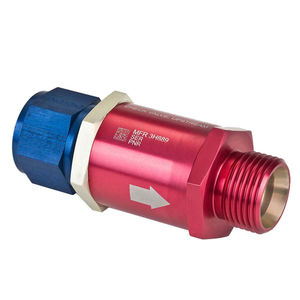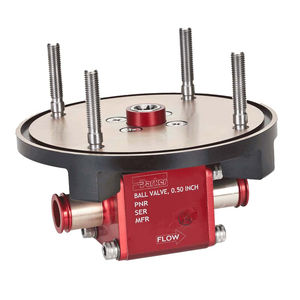
- Hydraulics - Pneumatics
- Valve
- Ball valve
- Parker Cylinder Division Europe
Ball valve FSDHBV001handfor controladjustment
Add to favorites
Compare this product
Characteristics
- Type
- ball
- Operation
- hand
- Function
- for control, adjustment, shut-off, bleed
- Body
- graphite, lead
- Applications
- turbine, engine, fuel, air conditioning
- Associated function
- outlet
- Other characteristics
- coaxial
Description
Handling bleed valves (HBVs) control the outlet of bleed air from the engine and into other aircraft systems. They are primarily used for engine starting, transient bleed, and surge control.
A handling bleed valve (HBV) is a coaxial shutoff valve used in gas turbine aircraft engines. It controls the inflow of bleed air into aircraft -
systems. Bleed air is hot, compressed air that is drawn out from the aircraft's engine and used for purposes other than fuel combustion. -
The HBV is used for starting, transient bleed, and surge control of the bleed air. The valve is either fully open or fully closed during operation, -
and is fail-safe, spring-loaded open. Solenoids managed by the engine electronic computer (EEC) are used to pneumatically control whether -
the vlave is open or closed. -
Among other things, bleed air modulated by the HBV is used for driving cabin pressurization, air conditioning, and anti-icing/de-icing -
systems. The release of bleed air from the engine also prevents pressure surging in the engine which would lead to undeseriable power -
surges or engine stall.
-
APPLICATIONS: Commercial aircraft engines
-
FEATURES AND ATTRIBUTES: -
• Air filters installed into the handling bleed valve (HBV) prevent contaminants from traveling any further into the aircraft -
• Adjustment screws on HBV units allow for adjustment of the unit without the need for disassembly -
• Carbon guides and bushings provide structural support and minimize assembly leakage -
• Body construction is 17-4 PH CRES, Inconel 718 -
• Guides and seals are carbon graphite
Catalogs
No catalogs are available for this product.
See all of Parker Cylinder Division Europe‘s catalogsOther Parker Cylinder Division Europe products
Aerospace Valves
Related Searches
*Prices are pre-tax. They exclude delivery charges and customs duties and do not include additional charges for installation or activation options. Prices are indicative only and may vary by country, with changes to the cost of raw materials and exchange rates.











